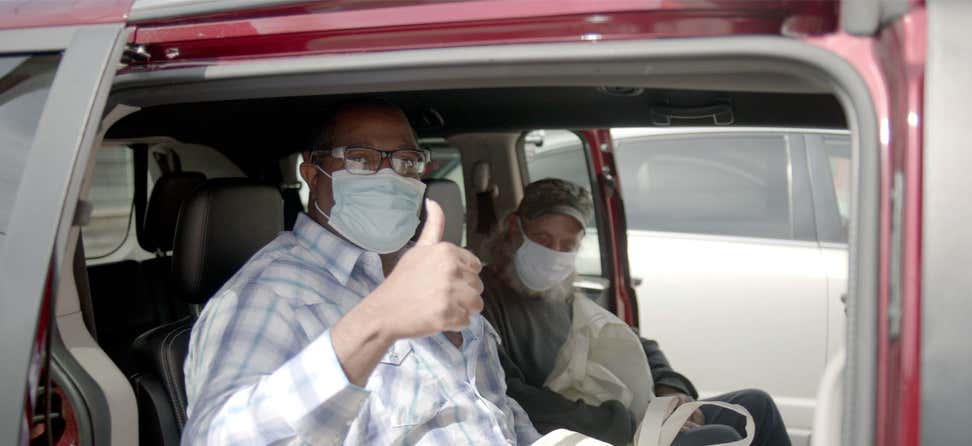Key Takeaways
Learn the terminology being used and find other resources when it comes to describing the delivery of evidence-based programs in a virtual setting.
This resource guide also reflects the temporary measures being taken during the COVID-19 pandemic, including what types of virtual services are being delivered.
Due to the COVID-19 pandemic, the number of ways community-based organizations can offer evidence-based programs has expanded. Depending on the program, evidence-based programs can be offered in a variety of formats, including over a video-conferencing platform, by telephone, through mailed materials, or a combination of methods. As evidence-based programs are reaching new audiences, the terminology used should be consistent and relevant to the different partners and participants interacting with the programs.
This resource was developed as an overall guide to assist organizations to find the terminology that best fits their programs. It is also recommended that organizations follow the guidance from the program developer on what term is most appropriate to use for each specific program.
Definitions at the Organization-Level
Modalities of Program Delivery
- In-person: The program is delivered 100% in-person for all participants by trained facilitators. Participants are physically present in the classroom, gym, etc. Communication may occur by phone, email, or reminder texts, but the primary instruction takes place in person.
- Online: The program is delivered 100% online for all participants. These programs were initially designed to be taught in an online format. Participants log into course sessions via a computer, laptop, tablet, or smartphone. Participants interact with the facilitators at various times and by various communication methods, including online classes, emails, phone calls, reminder texts, and/or through social media. Programs can be synchronized or asynchronous. Many online programs have discussion boards for peer-to-peer or instructor-to-participant conversations.
- Virtual: The program is occurring or existing primarily online. Delivery of program instruction may include pre-recorded lectures or self-paced activities but does not include physical face-to-face instruction. Participants interact with the facilitators at various times and by various communication methods, including online classes, emails, phone calls, reminder texts, and/or through social media. Many times, the term virtual is interchangeable with online, and virtual is referring to the platform or virtual room where an online class is held.
- Remote: The program is being delivered indirectly or from a distance. Remote learning strives to recreate an interactive, in-person learning experience, including logging in, or calling in, at the same time to participate in group learning activities. Some of the class content may be housed on a virtual platform. The instructor and students are interacting in a similar way as they would in an in-person class, and many times the program was initially designed to be taught face-to-face. [1]
Please note: Some remote programs do not allow for the use of smartphones, such as in certain falls prevention programs, where participants need both hands free to participate in exercises.
- Distance learning: The program is delivered 100% by a trained facilitator via a virtual classroom where the facilitator is present in one location and participants are calling in or video-conferencing in from a different location. Distance learning is another term to describe the method in which online, virtual, and remote classes are taught.
- Telephone-only: The program is delivered 100% by a trained facilitator over the telephone. Telephone-only programs may be held one-on-one or in small groups via a teleconference line.
- Combination or Hybrid: The program is delivered as a combination of in-person and online or remote instruction.
- Synchronous: Participants are engaging together in learning in real-time via a video-conferencing platform or by phone.
- Asynchronous: Educational content is available online for participants to access when it best suits their schedules. Real-time interaction is not required.
- Remote patient monitoring: “This allows direct transmission of a patient’s clinical measurements from a distance (may or may not be in real-time) to their healthcare provider.”[2]
Participants
While the definitions above provide a guide for your organization, these terms may not resonate with participants. Some of these terms are similar and somewhat interchangeable, so it is important to think about what they will mean to participants. For example, virtual, online, and remote may have different connotations but the definitions are similar. Therefore, determine which phrase works best with participants and use it consistently. Another approach when marketing to participants is to define what is needed to participate in the program. A few examples:
- Tai Chi for Arthritis for Falls Prevention: To participate in Tai Chi for Arthritis for Fall Prevention from home, you will need a camera, laptop, or tablet and a room with plenty of open space.
- CDSMP Toolkit with Phone Calls: For this program, you will need:
- Telephone
- Toolkit (which will be sent to your house)
The National Kidney Foundation of Michigan’s website demonstrates an example of how to describe the different formats to participants.
It is important to make sure that participants feel they have everything they need to participate in the program and that your organization can be there to troubleshoot these new delivery methods.
Health Care Sector
Due to the public health emergency, the way health care is delivered has also changed. Telehealth services reimbursed by Medicare have been expanded on a temporary basis. As a result of these expanded services, more physicians are meeting with patients through telehealth.
Please note: An organization would still need to be a Medicare provider and bill through existing pathways such as DSMT, CCM, and HBAI in order to access these benefits directly. However, community-based organizations can partner with health care organizations to contract to provide these services, where the healthcare organization is the billing provider.
For more information about how and when these benefits can be used, please see the resources at the end of this resource guide.
Q: What is telehealth?
“Telehealth, telemedicine, and related terms generally refer to the exchange of medical information from one site to another through electronic communication to improve a patient’s health.”
Source: https://www.cms.gov/newsroom/fact-sheets/medicare-telemedicine-health-care-provider-fact-sheet
Q: What types of services can be delivered via telehealth?
There are three main types of virtual services that can be provided to Medicare beneficiaries: Medicare telehealth visits, virtual check-ins and e-visits.
- Medicare Telehealth Visits: “A visit with a provider that uses telecommunications systems between a provider and a patient.” This can be for new or established patients.
- Virtual Check-In: “A brief (5-10 minutes) check in with your practitioner via telephone or other telecommunications device to decide whether an office visit or other service is needed. A remote evaluation of recorded video and/or images submitted by an established patient.”
- E-visits: “A communication between a patient and their provider through an online patient portal.”
Source: https://www.cms.gov/newsroom/fact-sheets/medicare-telemedicine-health-care-provider-fact-sheet
Q: What are some resources to learn more about telehealth?
- hhs.gov – https://www.telehealth.hhs.gov/
- Telehealth codes – https://www.cms.gov/Medicare/Medicare-General-Information/Telehealth/Telehealth-Codes
- Telehealth Resource Center – https://www.telehealthresourcecenter.org/
- Coronavirus (COVID-19) Partner Toolkit Resource Guide from CMS: https://www.cms.gov/outreach-education/partner-resources/coronavirus-covid-19-partner-toolkit
[1] https://drexel.edu/goodwin/professional-studies-blog/overview/2020/April/online-vs-remote-learning/
[2] https://www.cdc.gov/coronavirus/2019-ncov/hcp/telehealth.html








